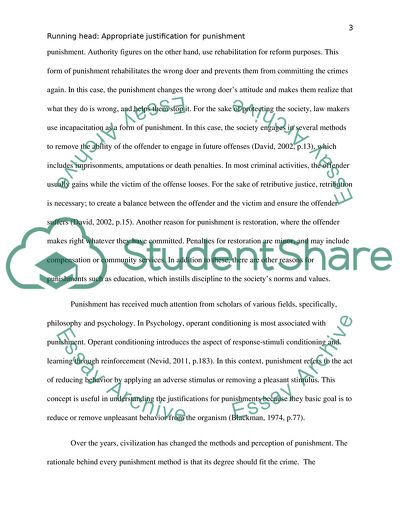Cite this document
(The Most Appropriate Justification for Punishment Coursework, n.d.)
The Most Appropriate Justification for Punishment Coursework. https://studentshare.org/law/1759306-what-is-the-most-appropriate-justification-for-punishment-deterrence-retribution-rehabilitation-or-incapacitation-discuss-with-reference-to-the-changing-historical-context-of-punishment
The Most Appropriate Justification for Punishment Coursework. https://studentshare.org/law/1759306-what-is-the-most-appropriate-justification-for-punishment-deterrence-retribution-rehabilitation-or-incapacitation-discuss-with-reference-to-the-changing-historical-context-of-punishment
(The Most Appropriate Justification for Punishment Coursework)
The Most Appropriate Justification for Punishment Coursework. https://studentshare.org/law/1759306-what-is-the-most-appropriate-justification-for-punishment-deterrence-retribution-rehabilitation-or-incapacitation-discuss-with-reference-to-the-changing-historical-context-of-punishment.
The Most Appropriate Justification for Punishment Coursework. https://studentshare.org/law/1759306-what-is-the-most-appropriate-justification-for-punishment-deterrence-retribution-rehabilitation-or-incapacitation-discuss-with-reference-to-the-changing-historical-context-of-punishment.
“The Most Appropriate Justification for Punishment Coursework”. https://studentshare.org/law/1759306-what-is-the-most-appropriate-justification-for-punishment-deterrence-retribution-rehabilitation-or-incapacitation-discuss-with-reference-to-the-changing-historical-context-of-punishment.


